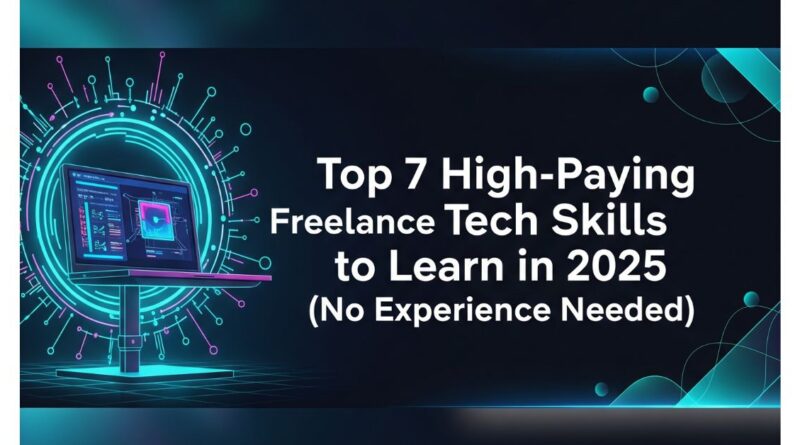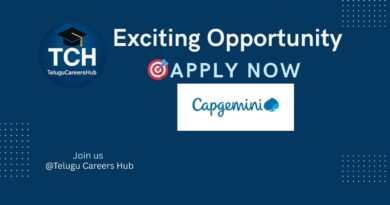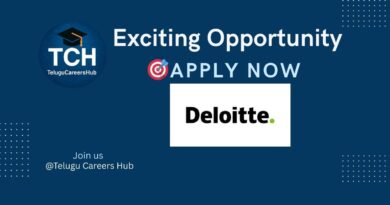Top 7 High-Paying freelancing Tech Skills to Learn in 2025 (No Experience Needed)
Top 7 High-Paying Freelance Tech Skills to Learn in 2025 (Freelancing: No Experience Needed)
The freelancing economy is not just surviving—it’s thriving at a record pace. Remote work, automation, and the digital-first transformation have accelerated how businesses operate. For aspiring freelancers, especially those starting from scratch or switching careers, 2025 offers golden opportunities to break into tech without a degree or past experience. You don’t need to be a tech prodigy—you just need the right roadmap.
In this guide, we’ll cover the most in-demand, beginner-friendly, and high-paying freelancing tech skills you can learn in 2025. These aren’t speculative trends—they’re practical, proven paths to earning freelance income with just a laptop, an internet connection, and consistent effort.
🚀 Why freelancing Tech Skills Are a Game-Changer in 2025
Before diving into specific skills, let’s answer why freelancing and why tech are such a powerful combination right now:
-
Flexibility & Freedom: Freelancing gives you control over your hours, projects, and income.
-
Global Market Access: Clients from Silicon Valley to Singapore hire remote freelancers daily.
-
High Income Potential: Top freelancers earn $50–$150/hour doing work they love.
-
Skill-Based, Not Degree-Based: Most freelance clients care about what you can do—not where you went to school.
🧠 How to Choose the Right Tech Skill for You (freelancing In-Depth Guide )
Stepping into the world of freelance tech can feel overwhelming at first. With dozens of skills to choose from—each with its own learning curve, career path, and earning potential—it’s easy to get stuck in “analysis paralysis.” The good news? You don’t need to learn everything. In fact, the smartest freelancers start by mastering just one skill that aligns with their personality, interests, and goals.
Think of this as building your foundation. Once you’re confident in your first skill, you can expand to adjacent ones—but only if and when you want to.
Let’s break it down in detail to help you pick the right path to start your freelancing journey in 2025:
🔍 Start With Your Natural Interests
Different tech skills appeal to different kinds of people. Here’s how to match your personality and interests with beginner-friendly freelance skills:
🎨 Do You Love Visual Design and Aesthetics?
Are you the type of person who enjoys arranging things neatly, experimenting with colors, or critiquing websites and apps based on how they look? Do you find yourself noticing poorly designed menus or logos and thinking “I could make that better”?
If this sounds like you, then you’re likely visually-oriented and aesthetically inclined—a perfect fit for:
✅ UI/UX Design
-
UI (User Interface) focuses on how things look—buttons, icons, layouts, typography.
-
UX (User Experience) focuses on how things feel—user flows, accessibility, usability.
Why it’s a good fit:
-
Doesn’t require coding.
-
Uses visual tools like Figma or Adobe XD.
-
You get to work closely with clients, product teams, or developers.
-
Your creativity directly influences how users engage with a product.
✅ WordPress Development
-
Offers creative control with drag-and-drop tools like Elementor or WP Bakery.
-
Lets you design sites, structure content, and add functionality with plugins.
Bonus: You can combine design + development, giving you an edge on platforms like Fiverr or Upwork by offering “complete packages” (e.g., design + build a website for a yoga instructor).
🧩 Do You Like Problem Solving or Logic Games? freelancing
Are you the type who enjoys puzzles, riddles, or troubleshooting problems? Do you like understanding how systems work under the hood or figuring out efficient ways to do things? Do you ask “how can I make this easier/faster?”
If you have a logical, analytical mind, these fields will come naturally:
✅ Python Scripting & Automation
-
Python is a flexible, beginner-friendly language used to automate boring tasks, manipulate files, scrape data from websites, and build bots.
-
You don’t need to be an expert programmer—just someone who likes tinkering.
Real-world freelance use cases:
-
A small business needs a bot to scrape leads from a directory.
-
A digital marketer needs automated Instagram DMs.
-
A blogger wants their content automatically sent to email subscribers.
✅ Data Analytics
-
Data analytics is all about identifying patterns, cleaning data, and presenting insights.
-
It appeals to those who like analyzing rather than building.
-
Tools like Excel, Google Sheets, and Power BI make it beginner-friendly.
Why this route is high value:
-
Businesses are drowning in data but starving for insights.
-
You’ll help them answer real questions: Which ads performed best? What day has the highest sales? Who are our top customers?
🛠️ Do You Like Building and Creating Things? freelancing
Are you someone who enjoys making stuff from scratch? Do you love the idea of building a fully functional website, app, or tool and watching it come to life? Does the thought of having your own software or app live online excite you?
If you’re hands-on and love creation, you’ll enjoy these paths:
✅ Front-End Web Development
-
You’ll use HTML, CSS, and JavaScript to create the visual part of websites.
-
Combine design and logic in a powerful, high-demand freelance skill.
Beginner-friendly bonus:
-
Visual feedback is immediate—you’ll see your work live in the browser.
-
Tons of beginner projects: build your own portfolio, a blog, or clone popular sites.
✅ Mobile App Development (Flutter or React Native)
-
Use tools like Flutter or React Native to build apps for both Android and iOS using a single codebase.
-
Perfect if you want to build mobile-first solutions for businesses, startups, or even your own ideas.
Why clients pay a lot:
-
Everyone wants a mobile version of their app.
-
Startups often need MVPs (Minimum Viable Products) built quickly for demo or fundraising.
🤖 Are You Curious About AI and Emerging Tech?
Are you fascinated by the power of AI tools like ChatGPT, Midjourney, or Claude? Do you find yourself exploring automation, productivity hacks, or experimenting with bots? Do you enjoy writing creative prompts and watching AI generate impressive results?
Then you’re likely a tech explorer—perfect for this rising freelance field:
✅ Prompt Engineering & Chatbot Automation
-
No deep coding required—just smart, creative thinking and a good understanding of language.
-
Helps businesses automate customer service, content generation, and productivity.
Why it’s booming in 2025:
-
Almost every business wants to “use AI” but doesn’t know how.
-
Few people understand how to write effective prompts or integrate AI into tools like Zapier, Notion, or Slack.
-
Low competition = high visibility.
Freelance services you could offer:
-
Create prompt packs for SEO writers or social media managers.
-
Build AI-based chatbots for websites and online stores.
-
Connect GPT to spreadsheets or CRMs to automate processes.
🎯 Choose Based on Your Goals, Too freelancing
Aside from personal interests, it’s important to consider your career and lifestyle goals.
| Goal | Ideal Skill Path |
|---|---|
| I want quick wins & small projects | WordPress, Python automation |
| I want to work with startups | Mobile app dev, Web dev, Prompt engineering |
| I want recurring clients | UI/UX design, Data analytics |
| I want to build my own SaaS or product later | Web development + No-code tools |
| I want to be a digital nomad | Front-end dev, WordPress, Data analytics (remote-friendly skills) |
🧠 Match Learning Style to Skill Type for freelancing
Everyone learns differently. Some people prefer visuals, others love reading or building hands-on. Align your learning style with a skill you’ll actually enjoy learning:
| Learning Style | Best Skill Fit |
|---|---|
| Visual learner | UI/UX, WordPress, No-code tools |
| Logical/reasoning | Python, Data analytics |
| Tactile/builder | Web dev, Mobile dev |
| Curious/explorer | AI, automation, prompt engineering |
💥 Don’t Fall Into These Common Traps
-
Trying to learn too many things at once.
Stick with one skill for 2–3 months, then reassess.
-
Assuming you need a degree to be taken seriously.
Your portfolio trumps your resume in freelancing.
-
Waiting to be “ready” before applying for gigs.
Apply as soon as you can demonstrate value—even with mock projects.
-
Choosing a skill only because it’s trendy.
If you don’t enjoy it, you’ll burn out fast.
✅ How to Validate Your Chosen Skill
Once you’ve narrowed down your preferred skill, here’s a 5-step validation process:
-
Watch 1–2 YouTube tutorials about the skill.
-
Try a 1-hour mini project (clone a landing page, build a script, create a UI in Figma).
-
Join a community (Reddit, Discord, Twitter/X circles) related to that skill.
-
Browse freelance jobs on Upwork or Fiverr—see how much demand exists.
-
Ask yourself: “Can I see myself enjoying this for the next 6 months?”
If you feel excited and confident after these steps, congratulations—you’ve found your starting point.
🔁 Everything Connects Later
It’s worth noting that these skills aren’t silos. As you grow:
-
UI designers often learn front-end dev to build their designs.
-
Web developers pick up Python to add backend automation.
-
Data analysts explore machine learning or AI automation.
-
No-code builders learn prompt engineering to supercharge their apps.
You’re not locking yourself in—you’re simply laying a strong foundation.
✨ Final Word: Start with One Skill
You don’t need to be a “tech wizard” to freelance successfully in 2025. You need:
-
One in-demand skill
-
A willingness to learn by doing
-
A small portfolio (even if it’s mock projects)
-
The confidence to pitch your work
Pick the path that fits your interests, learning style, and goals. Master one skill well, and everything else becomes easier to build on.
Your freelance journey doesn’t start with a job—it starts with a decision. Choose your skill, commit, and begin.
1. Front-End Web Development (freelancing: HTML, CSS, JavaScript, React)
💼 What It Is:
Front-end developers are the artists and engineers behind what users see and interact with on websites and apps. You’ll build pages, buttons, forms, and more using core web technologies.
💸 Why It’s High Paying:
-
Every business needs a website that looks good and works well.
-
E-commerce, startups, personal brands, and agencies are constantly hiring for web development work.
-
Clients will pay premium rates for developers who can create clean, responsive, and mobile-friendly sites.
🔧 Tools & Frameworks:
-
HTML5 – Structures web content
-
CSS3 – Styles it beautifully
-
JavaScript – Adds interactivity (dropdowns, sliders, etc.)
-
React.js – A popular JavaScript framework for building dynamic apps
-
Tailwind CSS – A utility-first CSS framework that speeds up styling
🎓 Where to Learn:
-
freeCodeCamp – 100% free, project-based curriculum
-
Codecademy – Interactive learning with progress tracking
-
Udemy – Courses like “The Complete Web Developer Bootcamp”
✅ Action Steps:
-
Build 3–5 small projects (portfolio site, blog, product landing page).
-
Use GitHub to host your code and Netlify or Vercel to deploy sites.
-
Share your builds on LinkedIn with short breakdowns.
-
Try redesigning existing websites for practice (e.g., redesign your school’s website).
2. Python Scripting & Automation (freelancing)
🐍 What It Is:
Python is a general-purpose language, but its automation capabilities make it ideal for freelance tasks that save clients time and money.
💼 Use Cases:
-
Automate data entry, lead scraping, and email outreach
-
Build web scraping bots for market research
-
Automate report generation from spreadsheets
-
Integrate APIs to connect apps (e.g., Google Sheets + Slack)
💰 Why It’s High Paying:
-
Automation reduces manual labor—clients LOVE this.
-
Small businesses, solopreneurs, and marketers often pay well for one-off bots or automations.
🛠️ Essential Tools:
-
Python
-
BeautifulSoup – Scraping websites
-
Selenium – Browser automation
-
Pandas – Data manipulation
-
OpenPyXL – Automating Excel
🎓 Learn From:
-
Python Crash Course (Eric Matthes)
-
Coursera – Python for Everybody (by the University of Michigan)
✅ Action Steps:
-
Build a LinkedIn scraper, a Google Sheets bot, or an Instagram analytics tracker.
-
Offer solutions on freelance platforms like “automate your Shopify reports.”
-
Join automation communities on Reddit and GitHub to get project inspiration.
3. WordPress Development (freelancing)
🌐 What It Is:
WordPress powers over 40% of all websites. As a WordPress freelancer, you’ll build and customize sites using themes, plugins, and drag-and-drop tools—no deep coding required.
🤖 Why It’s Beginner Friendly:
-
Easy visual builders like Elementor and WP Bakery reduce coding.
-
Thousands of plugins make advanced functionality easy (e.g., payment gateways, SEO tools).
🛠️ Skills You’ll Need:
-
Elementor or WP Bakery
-
WooCommerce for e-commerce
-
Basic HTML/CSS (for tweaking site layouts)
-
Yoast SEO, Jetpack, Contact Form 7, etc.
🎓 Learn From:
-
WPBeginner – Excellent tutorials
-
WordPress.org – Free documentation
-
Coursera – WordPress for Beginners courses
✅ Action Steps:
-
Create 3 sample sites: personal blog, small business website, and an e-commerce store.
-
Offer low-cost services on Fiverr for blog setup, SEO, or plugin installation.
-
Create bundled services: “Build + SEO + mobile optimization = $300.”
4. UI/UX Design (freelancing: Figma, Adobe XD)
🎨 What It Is:
UI/UX designers craft how digital products look (UI) and feel (UX). You won’t need to code—just a good eye for design and user behavior.
💼 Freelance Deliverables:
-
Website and app mockups
-
Wireframes and interactive prototypes
-
User journeys and flowcharts
-
SaaS dashboard designs
🛠️ Essential Tools:
-
Figma (cloud-based, collaborative, free)
-
Adobe XD
-
Sketch (Mac only)
-
Canva (for non-technical clients)
🎓 Learn From:
✅ Action Steps:
-
Redesign 3 famous apps (Netflix, Twitter, Spotify).
-
Share case studies on Behance or Dribbble.
-
Post UI tips or redesign timelapses on LinkedIn or Instagram.
5. Mobile App Development ( freelancing: Flutter, React Native)
📱 What It Is:
Mobile developers build apps that run on Android and iOS. Flutter and React Native allow you to write one codebase for both platforms, saving you and your clients time.
💰 Why It Pays Well:
-
Startups need MVPs (Minimum Viable Products) to test ideas.
-
App development commands higher freelance rates ($30–$100/hr).
🔧 Tools:
-
Flutter + Dart – Google’s framework for fast app building
-
React Native + JavaScript – Facebook’s solution, widely used
-
Firebase – For backend/database needs
-
Expo – Streamlines deployment with React Native
🎓 Learn With:
✅ Action Steps:
-
Build 2–3 clones (Instagram clone, Expense Tracker, Weather App)
-
Upload your apps to GitHub and create explainer videos.
-
Add demos to your freelance proposal to impress clients.
6. Data Analytics & Visualization
📊 What It Is:
Data analytics helps businesses make sense of their numbers. As a freelancer, you’ll clean, analyze, and visualize data to generate insights.
💼 Use Cases:
-
Sales performance dashboards
-
Marketing campaign analysis
-
Customer segmentation
-
Operations efficiency reports
🔧 Tools:
-
Excel, Google Sheets
-
Power BI, Tableau
-
Python (NumPy, Pandas, Matplotlib)
-
SQL (optional but valuable)
🎓 Learn From:
✅ Action Steps:
-
Analyze sample sales data and create a dashboard in Tableau.
-
Offer “data audit reports” for small business websites.
-
Share infographics and dashboards on LinkedIn to attract attention.
7. AI Prompt Engineering & Chatbot Automation
🤖 What It Is:
Prompt engineers craft the questions and commands that power AI tools like ChatGPT. This niche is exploding and ideal for tech-savvy freelancers—even beginners.
💰 Why It’s Exploding:
-
AI adoption is everywhere: customer service, content creation, marketing, etc.
-
Low competition means higher visibility and faster growth.
🔧 Tools:
-
ChatGPT / Claude / Gemini
-
Zapier, Make.com, Notion AI
-
OpenAI Playground, LangChain (intermediate)
🎓 Learn From:
-
YouTube: Search “prompt engineering tutorial”
✅ Action Steps:
-
Create prompt packs for use cases like “Instagram captions,” “cold emails,” or “SEO content.”
-
Offer chatbot setup services for Shopify, Wix, or WordPress websites.
-
Use GPT-powered bots to automate repetitive client tasks (support, booking, follow-ups).
🧰 Bonus: No-Code Tools (Webflow, Bubble, Glide)
🧠 What It Is:
No-code tools allow you to build apps without traditional coding. Perfect for designers, entrepreneurs, and marketers wanting to launch products or services.
🔧 Popular Platforms:
-
Webflow – Web design with logic and animations
-
Bubble – Build web apps (CRMs, marketplaces)
-
Glide – Turn Google Sheets into mobile apps
-
Softr – Drag-and-drop for internal tools
💼 Use Cases:
-
MVP development for startups
-
Event booking apps
-
Sales dashboards
🎓 Learn From:
📁 Build a Freelance Portfolio Without Clients
One of the biggest challenges for new freelancers—especially in tech—is this:
“How do I land clients when I don’t have any previous work to show?”
It’s a valid concern, but here’s the good news:
You don’t need clients to create a powerful freelance portfolio. What you need is proof that you can solve real-world problems using the skills you’ve learned. Many successful freelancers started their careers by showcasing personal or simulated projects. These weren’t created for paying clients—but they were still enough to get hired.
In fact, clients care more about your ability to solve their problems than your resume or formal experience.
Let’s break down how you can build an impressive freelance portfolio with zero prior work history, step-by-step:
🛠 Step 1: Choose a Real-World Problem to Solve
Start by identifying a common business or personal pain point that your chosen tech skill can address. You’re not building a project just to show off random features—you’re solving a problem as if someone paid you to do it.
Examples:
-
If you’re learning Python, build a script that automates invoice generation from a spreadsheet.
-
If you’re a web developer, create a modern landing page for a fictional business.
-
If you’re a UI/UX designer, redesign a popular app’s interface with a better user flow.
-
If you’re into data analytics, analyze mock e-commerce data and present insights in a dashboard.
-
If you’re exploring prompt engineering, build a chatbot that helps businesses respond to customer inquiries.
Don’t overthink the idea. The goal is to create something useful and relevant—not perfect.
💡 Tip: Think locally. Consider offering to build a site or system for a small business, nonprofit, or student group, even for free. Use that as a project case study.
📌 Step 2: Build the Solution Like a Real Project
Approach this portfolio project as if a real client hired you:
-
Outline the requirements – What problem are you solving? What are the deliverables?
-
Plan your tools – What platforms, frameworks, or languages will you use?
-
Execute the build – Take your time, test your work, and iterate until it looks and functions well.
-
Polish the end result – Clean code, refined designs, or optimized data visuals are all important.
Whether it’s a simple script, a full UI prototype, or an entire mobile app—treat the project with professionalism.
📷 Step 3: Document the Entire Process
This is what separates hobbyists from freelancers.
Your portfolio isn’t just a gallery—it’s a case study. Show potential clients how you think, how you solve problems, and how you deliver results.
Include:
-
The problem you addressed (e.g., “A small retailer struggles with tracking customer feedback.”)
-
Your approach (tools used, steps taken, and why)
-
Screenshots, demos, or videos of the work
-
Challenges faced and how you solved them
-
The final result or impact (even if hypothetical)
Even without real users, you can simulate outcomes. Example: “This tool would save approximately 4 hours/week of manual data entry.”
The more clearly you communicate your process and decision-making, the more trust you build with future clients.
🌍 Step 4: Publish Your Work on the Right Platforms
Once your project is complete, it’s time to showcase it professionally. Where you publish depends on the type of work:
📁 GitHub – For Developers & Automation Experts
-
Upload all code with clear structure and comments.
-
Write a clean README.md file explaining the project.
-
Include installation steps and demo GIFs/screenshots.
🎨 Dribbble / Behance – For Designers
-
Upload clean visuals, wireframes, and final designs.
-
Write brief case study captions for each project.
-
Create series or collections (e.g., SaaS Dashboards, App Redesigns).
🌐 Personal Portfolio Site – For Everyone
Build your own portfolio website using:
-
Notion – Clean and fast; perfect for writers and developers
-
Carrd – Minimalist one-page sites for free
-
Framer or Webflow – For advanced visual design and interactions
Your site should include:
-
About Me / Bio section
-
3–5 projects with case studies
-
Contact info or form
-
Optionally: testimonials, even from peers or mentors
📣 Step 5: Promote Your Projects Publicly
A great portfolio doesn’t help if no one sees it. Share your projects and what you learned in public spaces.
Post on:
-
LinkedIn – Share process breakdowns with insights or reflections.
-
Reddit – Subreddits like r/freelance, r/webdev, r/UI_design
-
Twitter/X – Share projects, code snippets, or “before vs after” designs.
-
YouTube or TikTok – Short walkthrough videos help build credibility fast.
Example LinkedIn Post:
Just finished building a fully functional CRM dashboard using React and Chart.js!
Simulated real business data and created insights like monthly revenue, top customers, and team performance.
Project breakdown in the comments 🔽
#ReactJS #FreelanceDev #PortfolioProject
✅ Summary: You Don’t Need Clients to Build Credibility
To recap, here’s what makes a powerful no-client portfolio:
-
A clearly defined real-world problem
-
A well-executed solution using your skill
-
Detailed documentation of your process
-
Professional publishing on the right platform
-
Public sharing for exposure and credibility
Don’t wait for someone to hire you to start. Initiate the work. Solve problems. Share what you build.
That’s how you get noticed—and that’s how clients find you.
🌍 Where to Find Freelance Jobs (2025)
🛒 Popular Platforms:
-
Upwork
-
Fiverr
-
Freelancer.com
-
PeoplePerHour
🎯 Niche & Premium Platforms:
-
Toptal (for vetted professionals)
-
Contra (for creatives and generalists)
-
SolidGigs (hand-picked gigs)
💡 Outreach Tips:
-
Pitch your project solutions, not just your availability.
-
Customize every proposal with relevant examples.
-
Keep proposals short, professional, and outcome-focused.
-
Always ask for reviews and referrals after successful projects.
🧠 Final Thoughts: Start Learning Today, Start Earning Tomorrow
You don’t need a degree. You don’t need 10 years of experience. In 2025, clients care more about outcomes than resumes. If you can demonstrate skill, consistency, and results—you win.
🎯 Pick one tech skill
🎯 Learn by doing
🎯 Build your own projects
🎯 Showcase them publicly
🎯 Start pitching and applying
The freelance economy in 2025 is booming—and it’s waiting for you.
Follow us for more Updates: Telugu Careers Hub



